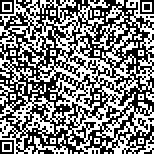| 引用本文: | 王发明, 莫权辉, 叶开玉, 龚弘娟, 刘平平, 蒋桥生, 齐贝贝, 李洁维.探讨植物单染色体测序中的假阳性问题[J].广西植物,2020,40(1):16-23.[点击复制] |
| WANG Faming, MO Quanhui, YE Kaiyu, GONG Hongjuan, LIU Pingping,
JIANG Qiaosheng, QI Beibei, LI Jiewei.Problem of false positives existing in plant single chromosome sequencing[J].Guihaia,2020,40(1):16-23.[点击复制] |
|
| |
|
|
| 本文已被:浏览 4652次 下载 2371次 |

码上扫一扫! |
|
|
| 探讨植物单染色体测序中的假阳性问题 |
|
王发明, 莫权辉, 叶开玉, 龚弘娟, 刘平平, 蒋桥生, 齐贝贝, 李洁维*
|
|
广西植物功能物质研究与利用重点实验室, 广西壮族自治区
中国科学院 广西植物研究所, 广西 桂林 541006
|
|
| 摘要: |
| 单细胞测序技术目前虽已广泛应用于人类、动物、微生物等物种的研究,但由于细胞壁的存在,使得该技术在植物上的应用举步维艰。如果能先分离出植物单条染色体,然后再应用单细胞测序技术进行扩增和测序,则可以避免细胞壁的干扰,从而具有重要的应用价值。虽然科研人员一直尝试针对单条植物染色体进行测序,但目前尚未见有成功的报道,也未见有文章对失败的原因进行讨论。该研究以六倍体中国春小麦为材料,针对使用单细胞测序技术进行单染色体扩增过程中出现的假阳性问题进行了探讨,分析了单染色体扩增失败的主要原因,并通过高通量测序技术研究了外源污染的可能来源。结果表明:在对实验器具、耗材、环境污染严格防控的基础上,人体接触可能是造成污染的主要来源; 同时,推测单染色体之所以扩增失败可能是因为染色体自身超螺旋状态造成引物难以结合和复制。该研究还针对存在的问题提出了可行性建议,为将来成功进行单染色体测序提供了有益的借鉴。 |
| 关键词: 单染色体, 单细胞测序, 外源污染, 假阳性, MDA, MALBAC |
| DOI:10.11931/guihaia.gxzw201905020 |
| 分类号:Q943 |
| 文章编号:1000-3142(2020)01-0016-08 |
| 基金项目:国家自然科学基金地区科学基金(31560509); 中国科学院“西部之光青年学者”项目(A类); 广西植物研究所基本业务费项目(桂植业19002)[Supported by the Fund for Less Developed Regions of the National Natural Science Foundation of China(31560509); Young Scholar of “Light of West China” Program of Chinese Academy of Sciences(Category A Program); Fundamental Research Fund of Guangxi Intitute of Botany(19002)]。 |
|
| Problem of false positives existing in plant single chromosome sequencing |
|
WANG Faming, MO Quanhui, YE Kaiyu, GONG Hongjuan, LIU Pingping,
JIANG Qiaosheng, QI Beibei, LI Jiewei*
|
|
Guangxi Key Laboratory of Functional Phytochemicals Research and Utilization, Guangxi Institute of Botany, Guangxi
Zhuang Autonomous Region and Chinese Academy of Sciences, Guilin 541006, Guangxi, China
Guangxi Key Laboratory of Functional Phytochemicals Research and Utilization, Guangxi Institute of Botany, Guangxi
Zhuang Autonomous Region and Chinese Academy of Sciences, Guilin 541006, Guangxi, China
|
| Abstract: |
| Single-cell sequencing technology is widely used in the research of human, animal, microorganism and other species, but it is hard to be applied in plant because of being cell wall. If a single chromosomes can be separated from plant cells and then were used for amplification and sequencing with single-cell sequencing technique, the barrier of plant cell wall will be removed and be of important application value. However, there are to date no claims on the successful application of single chromosome sequencing, and the causes of the failure are poorly understood. The issue of false positives that commonly exist in single chromosome amplification was studied, and the main causes of the failure in single-chromosome amplification were discussed. Besides, the probable sources of exogenous pollution in chromosome amplification were studied with high-throughput sequencing, and human body was proved to be the most probable sources of pollution on the basis of all experimental tools, materials, reagents and spaces being under extremely sterilized treatments. The super helical structures of chromosomes themselves were considered as the primary cause of failure in amplification, as primers were hard to bind to strands of DNA to start replication. Finally, some feasible suggestions were put forward. This study provides beneficial lessons for the successful single-chromosome sequencing in the future. |
| Key words: single chromosome, single-cell sequencing, exogenous pollution, false positives, multiple displacement amplication(MDA), multiple annealing and looping-based amplication cycles(MALBAC) |
|
|
|
|
|